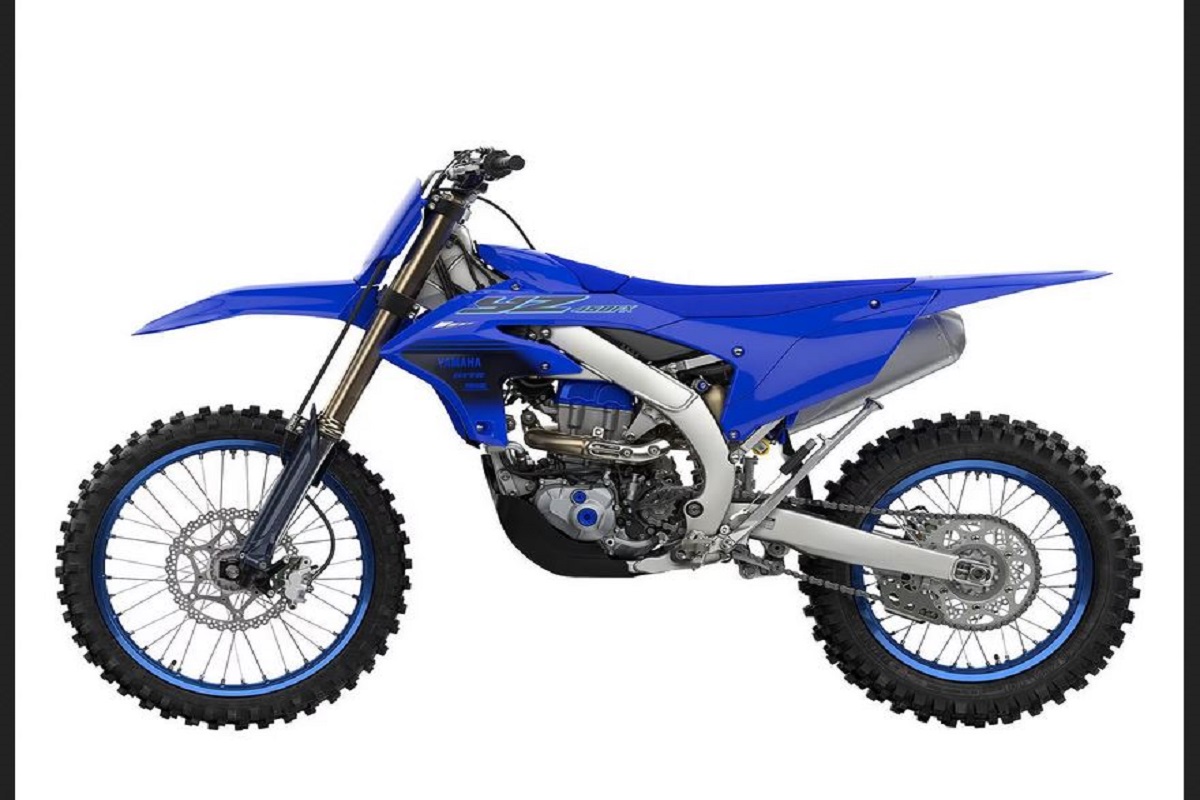Yamaha has introduced its 2024 cross-country motorcycle lineup, featuring the YZ125X and YZ250X two-stroke models, as well as the YZ250FX and YZ450FX four-stroke variants. These off-road contenders under the bLU cRU banner showcase cosmetic updates, including all-blue seats and fresh graphics. Notably, one of the models has received a comprehensive platform upgrade.

The 2024 Yamaha YZ450FX has undergone a significant transformation, mirroring the advancements seen in Yamaha’s flagship motocross bike. This year, the YZ450FX boasts a complete overhaul. Its fuel-injected liquid-cooled DOHC four-stroke 450cc engine has been meticulously redesigned to prioritize factors like reduced weight, compactness, higher rev capabilities, and increased power output throughout the entire RPM spectrum.
The engine enhancements encompass new shapes for the intake and exhaust ports, larger-diameter titanium intake valves, and a fresh forged aluminum piston, cylinder body, crankshaft, and balancer assembly. Yamaha’s shift from wet-sump to dry-sump lubrication is noteworthy, as it contributes to the improved design. The engine’s rev limit has been raised by 500 RPM, and the ECU settings have been fine-tuned to cater to the unique demands of cross-country and enduro-style racing.
Turning our attention to the 2024 Yamaha YZ250FX, this model introduces an innovative clutch design that ditches traditional coil springs. Instead, it adopts a new disc spring setup and integrates the primary gear and basket into a single steel unit. Yamaha touts this configuration for its benefits, which include a more compact, lighter, and durable assembly that offers smooth engagement and an exceptional feel. The clutch cover is also redesigned to enhance longevity and minimize wear. Furthermore, the YZ250FX presents a new wide-ratio transmission that employs a tri-shaft layout, optimizing gear ratios for cross-country riding.
In terms of Electronic Fuel Injection (EFI) tunability, Yamaha’s four-stroke cross-country models maintain their high standard. For 2024, the YZ450FX takes this a step further with the introduction of the next-generation Power Tuner app. This app is not only user-friendly but also packed with enhanced functionality. Engine mapping adjustments are facilitated through a convenient quick setting slide bar.
A novel traction control system, integrated into the app, offers riders a choice of three intervention levels—high, low, or off. Furthermore, a new lap timer and bike setup guides enhance the user experience. The YZ450FX also boasts a new handlebar-mounted switch, allowing riders to effortlessly switch between two preloaded engine maps—one standard and the other optimized for challenging conditions. These maps can be further personalized through the app.
Turning to the 2024 Yamaha YZ125X, Yamaha’s focus has been primarily on refining the chassis. A completely reimagined aluminum bilateral beam frame comprises over 10 distinct aluminum components expertly welded together. This meticulous approach enabled engineers to fine-tune each component’s rigidity and flex characteristics, resulting in optimal performance. This newly designed frame offers improved handling, a lighter sensation, enhanced bump absorption, and heightened traction.
Yamaha has also dedicated attention to ergonomics, resulting in a slimmer, flatter, and more compact body profile. Notable updates include a narrower fuel tank, redesigned radiator shrouds, and a contoured seat. Rider comfort and positioning have been enhanced, providing increased legroom between the seat and footpegs and a revised handlebar placement. The footpegs now feature lightweight aluminum alloy mounting brackets, and a new compact PVC handlebar pad completes the package.
The YZ450FX retains its fully adjustable KYB Speed Sensitive System (SSS) 48mm coil-spring fork and KYB shock. Both components have undergone revisions to align with the updated chassis. Particularly, the shock boasts specifically tuned damping characteristics. These adjustments translate to a 10mm-lower seat height, improving the center of gravity and overall handling, particularly in tight and technical trail sections. Additionally, fork compression damping adjustments can now be made by hand.



